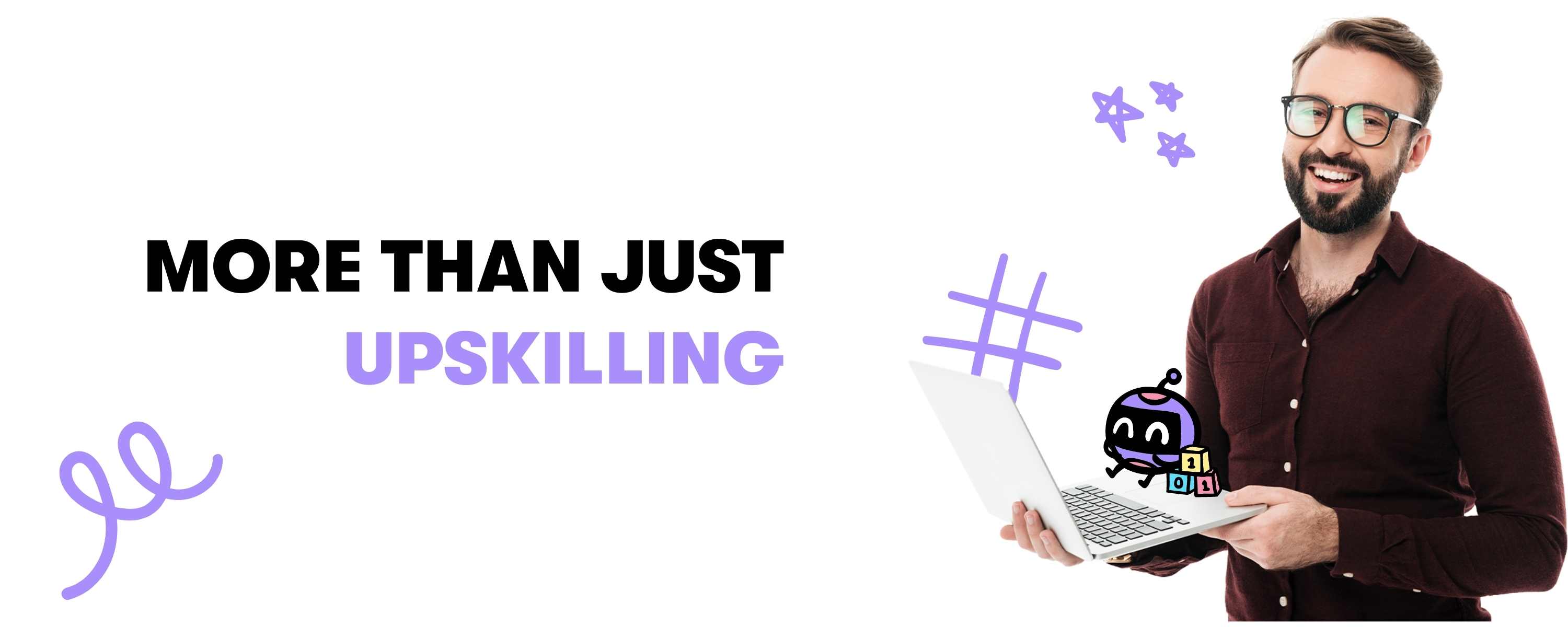The ultimate goal of any automation effort is to increase efficiency. While sales, marketing, accounting, finance and production have long been in the front row of companies' automation offensive, considerable automation potential still lies dormant and Process Automation in HR is not driven forward. The reasons for this pronounced reluctance to embrace all automation efforts are certainly also to be found in the difficulties some employees have in adapting to a rapid "digital revolution". In many cases, the automation mindset is simply missing.

The Digital Transformation is Unstoppable
The momentum that the use of artificial intelligence (AI) and automation technologies has triggered in companies will continue to grow. Fueled by the initial successes, companies will significantly increase their investments in hybrid automation solutions. The increasing level of automation will change the way entire departments function. The changes that accompany this digital transformation also imply a very different profile for HR professionals in the coming years. For HR experts who do not get to grips with the possibilities of innovative automation technologies as quickly as possible, the career train could have left the station sooner than they think.
A long list of repetitive work
Just because HR departments are actually concerned with people and not products, this does not mean that effectiveness and productivity are not the measure of their success. In principle, HR departments should also optimize the productivity of their own employees. The best possible performance is to be realized through optimal framework conditions. However, most HR organizations still spend an inordinate amount of time on manual administrative tasks: Checking applications, sending invitations for interviews, drawing up contracts or writing payrolls, and once the new employee is there, he or she needs network access and documentation. The list of repetitive processes in HR is long.
Lack of process optimization leads to lower productivity
Streamlining processes, optimizing workflows and identifying new efficiencies opens up space for HR professionals to develop new strategic approaches to people management. Process Automation in HR drives progress by eliminating certain task functions where humans are inefficient, inconsistent or exposed to risk. Failing to leverage existing AI and automation solutions can have negative impacts such as lower productivity, more errors, higher HR costs, or poorer candidate selection.
Lack of awareness of automation
Technologies such as machine learning (ML), for example, on the other hand, make it easier to select the right candidates by identifying top talent more quickly in the recruiting process using an automated search for keywords and other indicators. Automating HR compliance processes eliminates issues or challenges with rules and policies.
Automation solutions ensure careful review and management of personal data in the HR department. However, the reasons why Process Automation in HR departments mostly lag behind, despite all the known benefits, are largely due to a lack of awareness of the automation process itself and an unwillingness to take a critical look at their own processes. In both cases, the cause is a lack of knowledge about the possibilities of hybrid automation technologies.

New Key Competencies are in Demand
Given the increasing digitization and automation within companies on the one hand and the demand for more technical skills in the workforce on the other, it is five minutes to twelve in many HR departments in terms of the necessary in-house technical skills.
Increasingly in demand are key competencies with which HR employees are often unfamiliar, above all an understanding of business processes and organizations as complex systems and the optimization of systems through automation technologies. Basic knowledge of the application and mastery of innovative technologies is the ticket to the career elevator for every HR clerk today, or at least to a seat on the future-proof Jobexpress.
Large qualification gaps in the company's own ranks
While technological skills are very high on the agenda for employers today, as any kind of technology naturally requires employees who can use, maintain, repair and configure it, the skills are currently in short supply in the HR sector. At the moment, or so it seems, HR is unprepared for the significant skills gaps in its own ranks that automation and digitization are tearing. The lack of a clear understanding of the impact of automation and digitization on work in the HR department and on the requirements profile of employees, as well as the lack of knowledge about training and development opportunities, are slowing down the solution to the skills problem in the HR environment in many places. To make matters worse, automation is advancing faster than the internal corporate knowledge required to support it is growing. Yet companies have a variety of approaches available to them to close the skills gaps. They can look outside the company and hire new employees with the right skills. But they can also build the skills they need internally by providing appropriate training to their employees to prepare them for new roles and tasks.
Automation Academies close the skills gaps
In view of the well-known shortage of specialists with the necessary technical skills, external training of HR employees to become automation experts is certainly the most effective way. The automation basics can be learned at various digitalization academies in online courses or at an automation academy such as Bots and People without much prior knowledge. However, just as the skills of employees have changed, so has the training methodology of an Automation Academy like Bots and People. Today, cutting-edge learning technologies and methods are combined with a holistic technology perspective to build the skills needed to automate processes. Interactive collaboration tools like Microsoft Teams turn the classroom into a virtual space for learning.
Objective Automation Architect or Automation Strategist
The monolithic, one-dimensional understanding of automation training with a very strong product focus is giving way to vendor-independent, cross-system and cross-product training with a view to the hybrid use of different automation technologies. The training objective is to train HR employees to become Automation Architects and/or Automation Strategists. The primary objective is to impart an Automation Mindset that enables the employee to recognize, analyze, evaluate and ultimately automate processes. It is about understanding the possibilities of automation in the company and the potential benefits. With 360° training, even HR staff and employees of smaller companies without a Center of Excellence can get started in process automation and automate individual processes.

It's about more than just teaching basic skills
Upskilling and reskilling HR employees to become automation experts is a suitable means of counteracting the shortage of skilled workers and closing the skills gap within HR departments. This is because 360° reskilling empowers employees with a newly acquired automation mindset and comprehensive automation skills to automate their department's processes even more effectively through a hybrid use of technology and to increase the efficiency of their work.
This is not exclusively about teaching basic skills of digitization and automation. Rather, it is about improving the quality of jobs and employee satisfaction through the interlinked use of process automation in HR departments, but also in the entire company, contrary to the common view that automation destroys jobs. Because that is actually the core task of HR.









